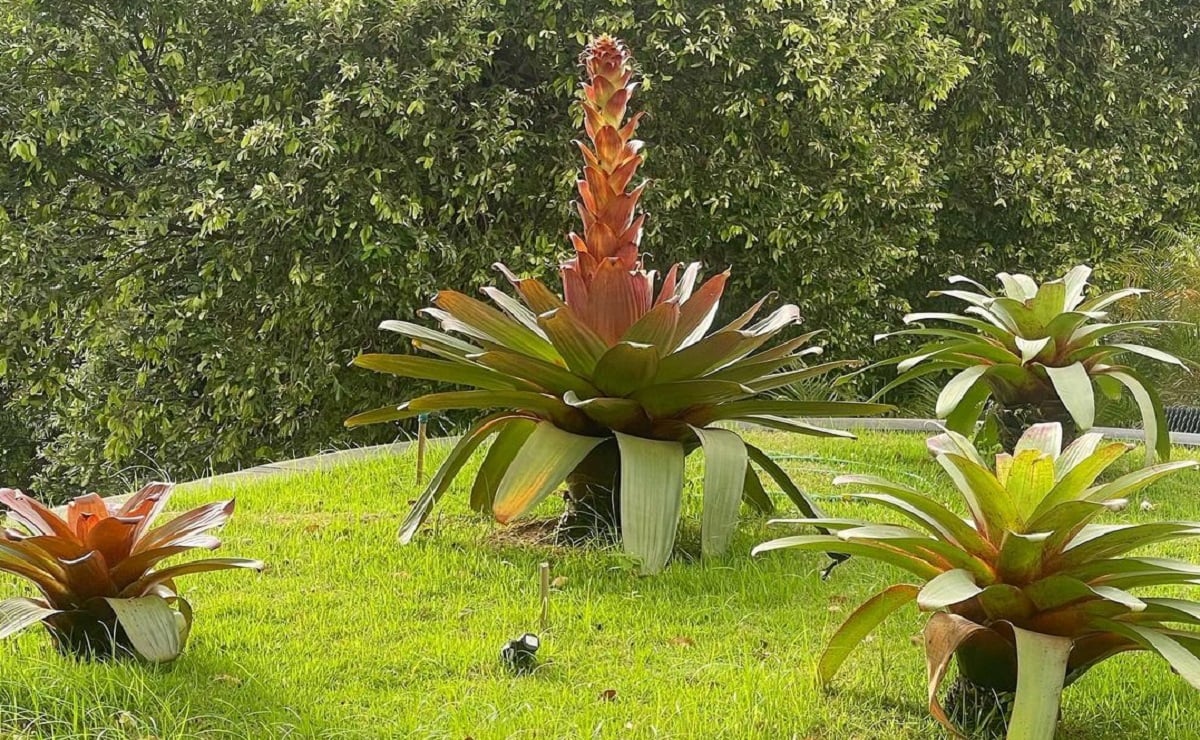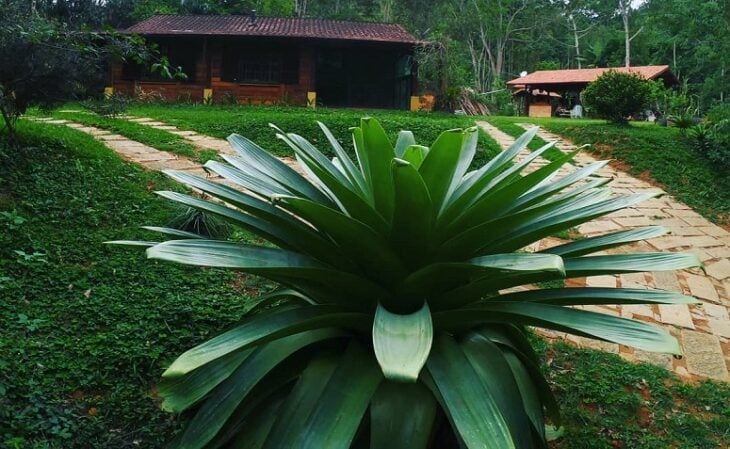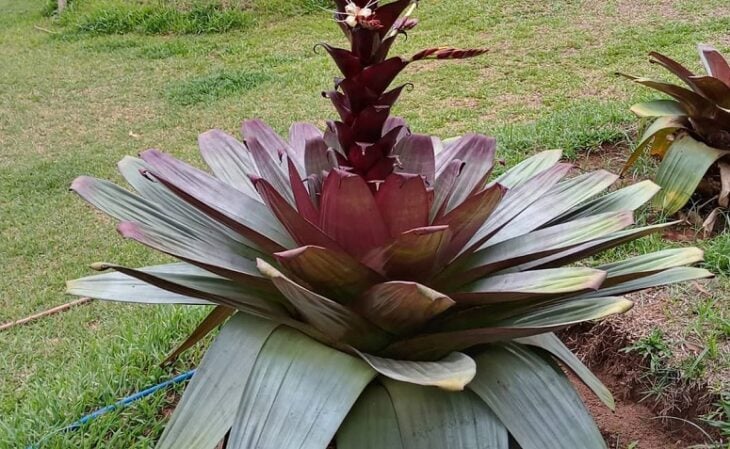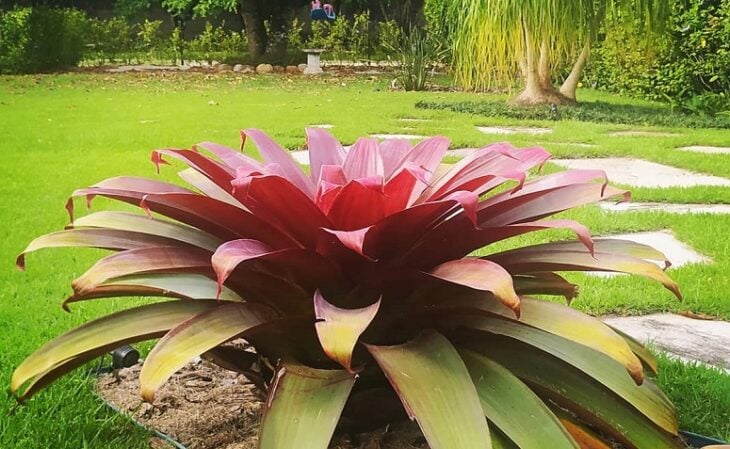Table of contents

If you are looking for an easy to grow plant to compose your outdoor area or garden, know that the bromeliad-imperial can bring charm to your decoration. Of Brazilian origin, the species has bulky and colorful leaves that do not go unnoticed. The plant also symbolizes protection and brings good energy. Below, learn how to grow it with professional tips!
What is the Imperial Bromeliad
The imperial bromeliad or Alcantarea imperialis is a tropical plant that is very easy to grow. According to the landscape designer, João Sabino, the variety is very common in landscaping, because it is resistant to pests and diseases.
According to Sabino, in an adequate environment, the species can reach up to 1.5 meters in height during its adult phase.
See_also: 45 environments with black porcelain tiles that are pure sophisticationOrigin of the Imperial Bromeliad
The imperial bromeliad is native to South America and Brazil. According to the expert, it is found in humid valleys and mountains in the mountainous region of Rio de Janeiro state. For many historians, its scientific name " Alcantarea "was a tribute to Dom Pedro II, who ruled the country during the time of the Brazil Empire.
Types of Imperial Bromeliad
The imperial bromeliad enchants with its ornamental foliage that has different types of colors. In nature, it is possible to find several varieties and it is also common to grow exotic seedlings in laboratories. Below, check out types that can bring even more charm to your garden:
1. imperial Bromeliad Green

The green Imperial Bromeliad corresponds to the traditional species Alcantarea imperialis It likes to be cultivated in environments with good humidity and heat, and is also very resistant. A curiosity is that its flowers usually attract insects and birds, such as hummingbirds.
See_also: Dining room mirror: 60 ideas to add sophistication to your home2. imperial Bromeliad Rubra

According to Sabino, the bromelia rubra has a purple coloration with different shades of green. This characteristic makes it even more ornamental and perfect for coloring outdoor areas and gardens. Regarding cultivation, it appreciates regular watering and soil rich in organic matter.
3. imperial bromeliad purpurea

"This variety also has wider and larger leaves, compared to other species. For decoration, it can compose winter gardens, as long as it is in a place with good natural light.
4. imperial bromeliad Peter Tristram

According to the expert, the Peter Tristram imperial bromeliad is known for being the largest of all bromeliads. It has leaves with a light green, gray, and brown coloration. In landscaping, it is ideal to compose outdoor areas, because it is usually more resistant to the sun and high temperatures.
Finally, Sabino reminds us that bromeliads tend to change color according to sun exposure, so in areas of direct sunlight it is common for the plant to have darker shades, while when cultivated in semi-shade they keep lighter colors.
How to care for imperial bromeliads
To have a successful cultivation, the bromeliad-imperial must be kept in environments that resemble its natural habitat:
- Irrigation: "because it is more resistant, the bromeliad-imperial can be watered periodically," says the professional. it is important to avoid overwatering, because the variety already accumulates water in the center of its leaves.
- Fertilization: To ensure its growth, the bromeliad can be fertilized once a month, using NPK 10/10/10 fertilizer. The application must be done directly on its leaves.
- Luminosity: The species appreciates full sun and part shade environments. It can also be grown indoors, as long as it receives sunlight in good quantity.
- Ideal soil: The substrate should be rich in organic matter and well-drained, because the plant has fine roots that do not tolerate waterlogging.
- Seedlings: "the imperial bromeliad produces seedlings after it flowers. They appear on the sides of its stem and propagate easily," he explains. it is also possible that the cultivation occurs through seeds.
- Flowering: The species has flowers that are usually yellow and white. They emerge from a flower stalk that can reach up to 3 meters in height.
- Life cycle: The life cycle of the bromeliad is considered long and can last up to 10 years. After its first bloom, the plant usually dies and leaves new seedlings.
Finally, according to João Sabino, the bromeliad-imperial is a variety that is at risk of extinction, since it is commonly taken illegally from nature. Thus, the specialist recommends that it be purchased only from stores and websites that have good provenance, and are also certified by IBAMA.
Learn more about the imperial bromeliad
Well, you already know that the imperial bromeliad is a lovely plant and easy to care for, but how about knowing a little bit more about it? The following selection of videos brings curiosities, cultivation tips, and valuable orientations to cultivate it successfully. Check it out:
Curiosities about the Imperial Bromeliad
In this video an expert highlights the main characteristics of the imperial bromeliad. The video brings details about the species' natural environments and also valuable cultivation tips. Also, did you know that for the bromeliad to live longer, it is necessary to avoid its blooming? Watch the video and see this and other amazing curiosities about the plant!
Tips for growing in your garden
Here, you will find more information about the cultivation and life cycle of the bromeliad. The video also brings guidelines for cultivating it in outdoor areas in a practical and simple way. In addition, the expert also shares tips on substrate, fertilization, watering, and lighting. It is worth watching and taking note of the extra guidelines.
How to plant in a pot
Learn practical tips for planting bromeliads in pots. The tip is also valid for the imperial bromeliad, because the process can be applied to all species. In the video, the expert brings the step-by-step of planting and also teaches how to make the ideal substrate for the plant. It is worth watching and start thinking about how to decorate your home with the new seedlings.
How to make bromeliad seedlings
Finally, how about learning a little more about how to propagate bromeliads? Here you will find tips from Marcelo Soares, a forest engineer, on how to make seedlings in a practical way and recipes for substrates and fertilizers.
Certainly, the outstanding presence of the imperial bromeliad will bring even more charm and beauty to your decoration.


